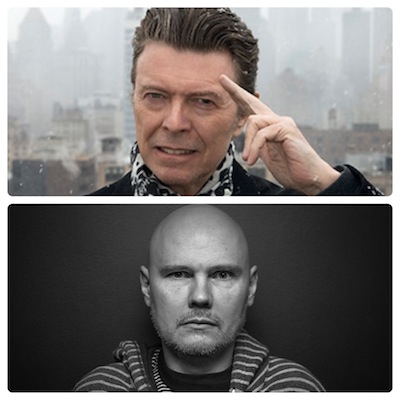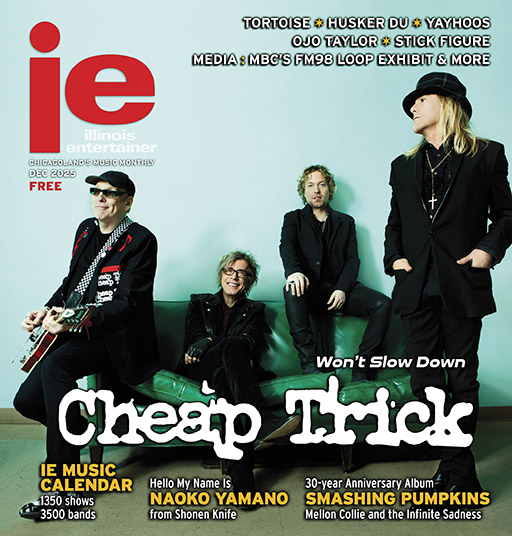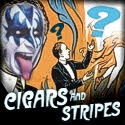Featured: My Back Pages

First, let me preface this with a little disclaimer. Call me a misanthrope, but — in all my 40-plus years of rock journalism — I have never really been a sharer, outside of my stories. I see no use for social media; I don’t care what your opinion of my work happens to be; this is not a dialogue. Enjoy what I’ve written about Musician X, Y, or Z, then line the parrot cage with my words tomorrow. Harsh, I know. But I sincerely believe that the less people know about you, the better, and my hard-learned life’s motto is “Everybody has an agenda,” and it rarely includes you. Get used to it. That being said, and given this surreal Poe-like “Masque of the Red Death” situation in which we all find ourselves, I thought it might be time to share a little. Namely, what literature has meant to me ever since I started reading H.P. Lovecraft in grade school, and the curious role it came to play in my career — where I brought a hand-picked favorite book as a gift to almost every artist I have interviewed. A fact that — since I don’t divulge too much — few folks ever knew.
Now I don’t want to be The Kids in the Hall flying pig here, grabbing attention with a whiny ‘Hey, hey, hey — look at MEEE!’ That’s not what this is. But I did regularly find myself in the unique situation of having one-on-one, face-to-face conversations with celebrities, armed only with an often-oblique line of questioning that I came up with myself, a genuine enthusiasm for their work, and a good idea of what I thought they might like to read. Underscoring this was my belief that writers always take, take, take from their subjects, so why not try to give back in some small way? Raised in the Midwest, I learned two prime directives — why give up on the heavy metal you loved the day before when punk rock came along? And when you stumble across a great piece of art, why Bogart that joint? Share it with as many potential fans as you can. That’s why I started doing this in the first place. First 1977 interview: Nazareth. Second: The Ramones, as I recall. And it just kept going — and getting more and more fascinating — from there.
There are a few megawatt personalities that I initially couldn’t figure out, gift-wise, so I improvised. For instance, the first time I sat down with David Bowie, I had no idea which novels he had or hadn’t read, so I brought him a bug-eyed Margaret Keane print and corresponding T-shirt. And his face lit up. “What. Is. THIS?” He inquired, unfamiliar with her kitschy work. And we started by talking about our mutual respect for French film director Jean Cocteau and his dumbfounding 1947 masterpiece Beauty and the Beast. Then he related an incredible story of Tony Scott — the director he had worked with on the vampire flick The Hunger — and how he had hit a brick wall when trying to film Catherine Deneuve’s billowing bedroom curtains shot. How could he do it to full effect? Bowie recommended the method Cocteau used for Josette Day’s hall-floating scene, but Scott had never seen it. So the rocker rented a London movie theater one night, pre-video, to screen the black and white classic for just the two of them. Popcorn included. Scott immediately grasped the technique and employed it well. But before our hour was up, the Thin White Duke had recommended one book that he deemed as all-important — Yukio Mishima’s Confessions of a Mask. It was then out of print in the States, but I finally tracked down a copy in London a year later. It felt like I’d won some sort of Frank Buck trophy — I took these tips that seriously. It was an incredible honor to get such information firsthand.
My initial mid-‘80s chat with Lou Reed was only a ‘phoner,’ and I’d just moved to San Francisco and was beginning to frequent City Lights and other hip bookstore haunts. During the talk, he casually mentioned Delmore Schwartz, and I stopped him. “Who’s that?” I asked. (Another Midwest thing — never try to bluff your way through any historical reference to art; It never hurts just to come clean and admit that you don’t know what in the fuck they’re talking about.) And — instead of sighing in frustration or simply hanging up — he took the time to explain, in-depth, who the man was and what he had meant to him in college. I went to City Lights the next day and bought as many of his titles as I could. Years later, when Reed and I finally met in person in L.A. to discuss his New York album, I brought him a pile of books that I had fallen in love with — including French surrealist Joris-Karl Huysmans’ La Bas and A Rebours — and I told him how much his kindness had meant to me, along with the way that he had delivered it without a note of condescension. I asked him why he did that, and he replied — simply, wisely, as only Lou Reed could, while chewing a stalk of celery — “I could tell that you were actually curious.” I never forgot that. Because curiosity is what it’s always been about. I can’t imagine ever looking around at the world without it, alongside a child-like sense of Little Prince wonder (another unassuming masterpiece, along with Coelho’s The Alchemist).
And over the years, the tips just kept on coming. When my friend Phillip Lithman (AKA the late Snakefinger) returned from Australia, he had remembered my obsession with gaslight-era horror. He bought me a Down Under edition of William Hope Hodgson tales. I was stunned. Over lunch in North Beach, Ronnie James Dio swore that the only work I would ever need was T.H. White’s Arthurian classic The Once and Future King. He was right — it was pretty definitive. Lydia Lunch insisted on Harry Crews’ Feast of Snakes, about a snake-handling cult. The Cardigans singer Nina Persson sang the praises of Alan Lightman’s brilliant Einstein’s Dreams, where every chapter imagines an alternate universe with its own unique physical properties. The first time I talked to Skinny Puppy main-man Nivek Ogre, I told him that my then-favorite tome was Maldoror by Lautréamont, an 1869 work about a man pursuing an intentionally amoral existence. There was a surprised pause before he wholeheartedly concurred: “That’s my Bible!”
Richard Ashcroft — one of rockdom’s most erudite artists — urged me to read Moon Dust: In Search of the Men Who Fell to Earth by Andrew Smith, which studies the loneliness felt by astronauts — whose techniques are being tapped back into now as we all shelter in similarly-isolated place. Australia’s Divinyls recommended one of their homeland’s cult classics, Helen Garner’s Monkey Grip, after lead singer Christina Amphlett appeared in its film version, and the band was featured on the soundtrack. The Psychedelic Furs’ Richard Butler raved about Martin Amis’ London Fields. Everyone connected with Pearl Jam — from their publicist to Eddie Vedder himself, circa Yield — sang the praises of Daniel Quinn’s crucial philosophical novel Ishmael, wherein (and I know this sounds crazy, but I assure you it’s not) a male Silverback gorilla telepathically teaches an ex-hippie daily lessons about why man, in arrogantly thinking he’s the end product of evolution, has doomed himself to extinction. And we’re getting damned close. It was a treatise so important to me that I lost count of how many copies I’ve bought for kindred-spirit musicians over the years.
My carefully-unearthed recommendations often boomeranged back on me. The third or fourth time I talked to Chris Cornell — whose shy, soft-spoken demeanor belied a rapier wit — I brought him a copy of Leonard Cohen’s Stranger Music lyrical/poetry anthology, hoping he’d dig it. Next time I saw him, his then-wife Susan Silver pulled me aside and said, “I don’t know whether to punch you or hug you — every morning at 3:00 a.m., Click! The bedside light turns on, and he’s reading that Cohen book again! He even set one of his poems to music!” A recording, of course, nixed by the protective Cohen; Nobody sang his words but him. And nobody really could, truthfully. And when I met Cohen, I’m pretty sure I gave him a copy of Budd Schulberg’s prescient 1941 book What Makes Sammy Run, the ultimate showbiz-weasel yarn, where the comeuppance is Icarus-awesome in scope.
If I loved a book, I would purchase multiple copies for my interview subjects. Like J.T. Leroy’s soon-to-prove-controversial Sarah, which was — and still is — a great read no matter who wrote it, or under what assumed alias. Brian Molko from Placebo got my first edition, and over a dozen more performers received a copy shortly after that. I still consider Laura Albert, a friend, and I saw no reason to turn on her when the hoax was revealed. (I mean, did people lose all faith in the 1869 sideshow attraction The Cardiff Giant once it was shown not to be a giant at all, but a human-made gypsum carving? I’m sure that most folks were still thrilled to have seen it. Again, I digress). For Enya, I chose Ken Grimwood’s brilliant what-if parable Replay, and for Trent Reznor and also The 1975’s Matthew Healy, I chose Cormac McCarthy’s brutal Blood Meridian, with passages so ornately constructed you find yourself rereading them five minutes later. Nothing against The Road and No Country For Old Men, of course. Robert Plant also received two French surrealist classics, Huysmans’ La Bas and A Rebours, and when I bumped into him a year later at L.A. club The Viper Room, and he said he really loved them. John Doe from X adored Natsuo Kirino’s revenge thriller Out so much; he passed it on to Exene Cervenka, who forwarded it to the rest of the band. A perfect trajectory of aesthetic appreciation, I thought. Yet I certainly don’t mean to make these exchanges sound commonplace — I always saw them as an extraordinary privilege, and never once took them for granted. They were just part of my punching the clock every day as a rock journalist that genuinely cared about his job. Ergo, here a few other selections I’ve passed on that have withstood the test of time.
GREAT ONE-MAN-AGAINST-THE-WORLD YARNS: Run by Douglas Winter; Stephen Hunter’s Point of Impact; and David Morrell’s Desperate Measures (and First Blood, too).
COOL WEREWOLF HOWLERS: The Nightwalker by Thomas Tessier; Kirsten Bakis’ Lives of the Monster Dogs, and Sharp Teeth, penned in inventive free verse by Toby Barlow.
KILLER PULP NOVELS: Jim Thompson’s definitive The Killer Inside Me (and pretty much anything else by him, as well); Richard Neely’s Shattered; David Goodis’ Shoot the Piano Player, and Leigh Brackett’s The Tiger Among Us, and anything in the cutting-edge Black Lizard press series.
GREAT HORROR OBSCURITIES: Keith Roberts creepy The Furies, where giant wasps — not a coronavirus — enslave humanity; Angela Carter’s The Bloody Chamber; Clive Barker’s original six-volume Books of Blood; Ray Garton’s Live Girls (lizard vampires — who knew?); Richard Matheson’s I Am Legend and collected short stories; Algernon Blackwood’s Ancient Sorceries and Other Weird Stories; and — to this day — any anthology of H.P. Lovecraft’s work.
OTHERS TOO UNIQUE TO CLASSIFY: Henri Guiggonat’s Daemon of Lithuania (About a cat that sits. Around. The house); Geek Love, a compelling story of circus freaks by the late Katherine Dunn; Tim Powers’ time-warped Anubis Gates and The Stress of Her Regard (Lord Byron and Percy Shelley battle very real succubi); Christopher Fowler’s Roofworld and Neil Gaiman’s Neverwhere, both imagining sinister parallel London universes; Stephen Gregory’s demon-bird parable The Cormorant; Sue Townsend’s hilarious Adrian Mole series, commencing when he’s 13 and 3/4 years old; and Gothic artist Edward Gorey’s Amphigorey trilogy, including The Doubtful Guest and The Gashlycrumb Tinies alphabet of moribund children: “M is for Maud, who was swept out to sea / N is for Neville, who died of ennui.” An affliction you are guaranteed to avoid by disappearing into any of the above mentioned literary escapes. Trust me — I’ve spent my career giddily compiling this stuff. And naturally, there’s probably a lot that I’m forgetting. And lately, I can’t get enough of mortician Caitlin Doughty’s campy cadaverous essays, like “Will My Cat Eat My Eyeballs? Big Questions From Tiny Mortals About Death” (the answer is yes, but they prefer fleshier tidbits like your lips or eyelids first).
What does all of this signify? Fuck if I know. But — as Evan Rachel Wood’s Dolores Abernathy android character put it in this season’s Westworld finale, “Some people choose to see the ugliness in this world, the disarray. I choose to see the beauty.” And I think it’s made me a better, more inspired writer. Billy Corgan — right after an interview with some other antagonistic journalist had ended — phrased it this way: “The reason that you’ll always get the real story and guys like him won’t is, you don’t step to me with your hands behind your back, holding some malicious weapon — you walk up with your palms outstretched and open, always holding a gift, with no hidden agenda. So I can finally relax and answer some serious questions.” Probably the nicest thing anyone’s ever said to me.
– Tom Lanham











